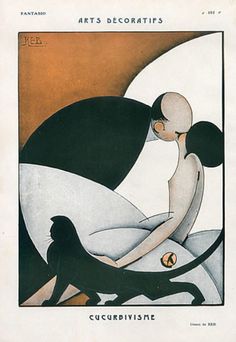Product Description
Raymond Subes / French Art Deco Wrought Iron Coffee Table c. 1935


Raymond Subes (1893-1970), France.
Coffee table, circa 1935.
Wrought iron, beige, ecru, and dark brown Afghanistan jasper top.
Related work illustrated: R. Subes, Ferronnerie Moderne (Paris: Editions Vincent, Fréal et Cie., n.d. [c. 1937]).
For more information see: Art Deco, Victor Arwas, (New York: Harry N. Abrams, Inc., 1980) p. 305; Encyclopedia of Art Deco, ed. Alastair Duncan, (New York: E.P. Dutton, 1988.) p. 152, 167.
H: 19 1/3” x D: 35 1/2”
Price: $38,000
During the 1930s, Raymond Subes became one of the foremost designers of wrought iron in his native Paris. Subes studied at the Ecole Boulle and the Ecole des Arts Décoratifs before going to work for Emile Robert, a leading ironwork designer. He later became the artistic director of Borderel et Robert. At this venerable firm he created iron grills and doors for architectural commissions, many of which may still be seen all over Paris. His work was exhibited at the Paris 1925 Exhibition of Decorative Arts and he designed the wrought ironwork for the ill-fated ocean liner the Normandie. Subes’ early work was ornate and naturalistic, but gradually became more geometric and linear. This Art Deco table is a particularly lyrical example of his mature style, with its gracefully scrolling iron legs.
Raymond Subes / French Art Deco Wrought Iron Coffee Table c. 1935
You must be logged in to post a comment.
***Top quality gem blue zircons over 10 carats trade at a minimum price of $200 per carat and go up from there depending on the size of the stone and the quality of the color. Blue zircon, the most popular color, is produced by heat treatment of brown zircon. But not all brown zircon will turn blue when heated; only some zircon has the right physical structure for this to occur. This is why most blue zircon comes from certain sources in Cambodia or Burma. Blue zircon is a reasonably hard gem with a Mohs hardness of about 7 to 7.5. Blue zircon has some unique properties that make it very popular with gemstone aficionados. Not only does zircon have outstanding brilliance, but it also has very strong dispersion or fire, the tendency to split white light into the spectral colors. Zircon also has very pronounced birefringence or double refraction, with a wide variance between the two refractive indices. This can be often be observed with the naked eye when you look down through the table of a cut zircon; you will observe facet doubling that makes the facet edges appear blurred.
Jewellers and Goldsmiths to Queen Victoria. Successors to Mortimer & Hunt on the retirement of John Mortimer but still trading until 1876. Hunt & Roskell, a firm of manufacturing and retail jewellers and silversmiths, was founded by Paul Storr in 1819, trading as Storr & Co. (1819-1822), Storr & Mortimer (1822-1838), Mortimer & Hunt (1838-1843) and then Hunt & Roskell (1843-1897). Hunt & Roskell had retail premises at 156 New Bond Street and a manufactory at 26 Harrison Street, near Clerkenwell. John Samuel Hunt, who had assisted Storr from the start, continued as a partner until his death in 1865. J. S. Hunt was then succeeded by his son, John Hunt (d.1879). Robert Roskell, formerly a watchmaker and merchant of Liverpool, joined in 1844 and remained in the firm until his death in 1888. In 1889 the firm was taken over by J.W. Benson and continued in business as Hunt & Roskell Ltd.

Reviews
There are no reviews yet, would you like to submit yours?